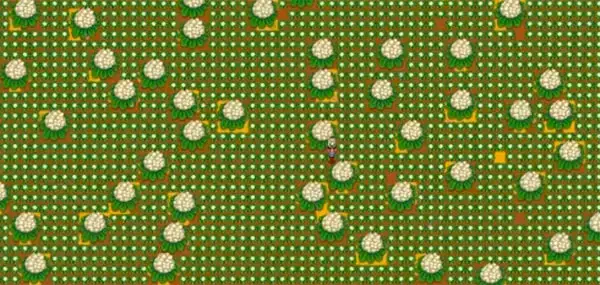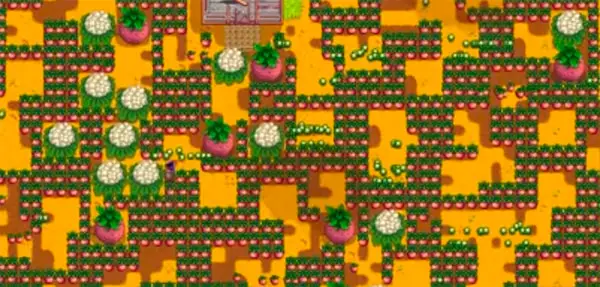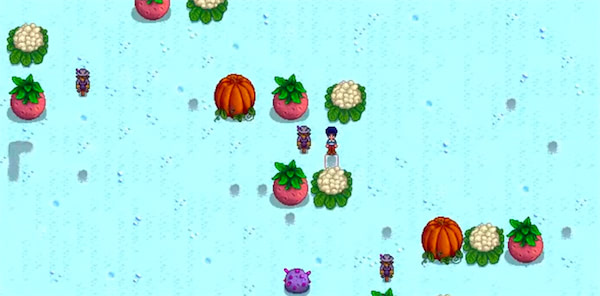Unveiling the Mysteries of Giant Crops in Stardew Valley
Stardew Valley is a place of endless possibilities, from mining and fishing to animal husbandry and crop farming. Among the many aspects of farm management, giant crops hold a unique and mysterious allure for many Stardew Valley enthusiasts. These gigantic vegetables not only offer high yields but also serve as decorative additions to your farm. This article will break down the specific conditions required to grow giant crops, their utilities, and a few tips and tricks for aspiring agriculturalists.
Conditions for Growing Giant Crops
To unravel the enigma of giant crops, it’s essential to meet certain preconditions. Ignoring these could mean never having the satisfaction of seeing one sprout in your fields.

Location Matters
- Outdoor Farming: The first condition is that the crops should be planted outdoors on your farm. No other maps are eligible.
- Greenhouse and Ginger Island: Although you can plant crops in these locations, they will not grow into giant crops.
- No Potted Plants: Planting in flower pots on your farm won’t result in giant crops either.
Growth Stage
- Maturity: The crop must be in its final growth stage, meaning it should be mature but not necessarily harvested.
Specific Crop Types
- Cauliflower, Melons, and Pumpkins: Only these three crops can grow into their giant versions. If you see any other giant crops, it’s likely due to mods.
- Giant Mushrooms: Do note that giant mushrooms are not classified as giant crops. They are mushroom trees.
Grid Formation
- 3×3 Grid: You must plant a minimum of 9 of the same type of crop in a 3×3 grid.
- Watering: The crop in the center of this grid must have been watered the day before. The surrounding 8 crops don’t necessarily have to be watered.
After fulfilling these conditions, your 9 crops will have a 1% chance to turn into a giant crop every day. The game uses a pseudo-random function to determine this chance, which takes into account the game ID, in-game day, and the X and Y coordinates of the central crop.
Understanding the Probability Mechanics
The game relies on a pseudo-random function with a seed value to calculate the chance of a crop turning giant. However, unlike other pseudo-random events in the game, predicting giant crops is challenging due to a series of complex calculations.
Even if you have the same seed value, this doesn’t guarantee the crops will turn giant. The algorithm takes into account multiple factors such as the game ID, day number, and X and Y coordinates of the central crop. It’s not as straightforward as other predictions like seed makers, recyclers, or clay.
Utility of Giant Crops
There are primarily two reasons why one might aim to grow giant crops: for harvesting and for aesthetic purposes.
Harvesting and Brewing

- Harvest Tool: You’ll need an axe to harvest a giant crop, and unlike regular crops, you won’t gain any farming experience from it.
- Yield: Each giant crop drops between 15–21 normal-quality crops of the same type, averaging 18.
- Brewing and Preserves: If you’re into brewing or making preserves, giant crops are a lucrative choice as you effectively double your yield. However, the 1% chance is a limiting factor.
Secret Notes
Despite information suggesting a 100% chance of dropping a secret note when harvesting a giant crop, the drop rate is not guaranteed. This appears to be because while the game does call the function for the secret note drop, that function itself isn’t a guaranteed drop.
Decoration and Adornment

- Season-Proof: Giant crops can serve as long-lasting decorations since they don’t require watering and won’t rot when the seasons change.
- Immunity to Lightning: They are also not affected by weather conditions like lightning, making them a convenient decoration.
Tips for Growing Giant Crops
Mass Planting Method
- Increase Chances with More Grids: The more 3×3 grids you plant, the higher your chances. For instance, a 4×4 grid gives you 4 chances, and a 10×10 grid gives you 64 chances.
- Avoid Sprinklers: Using sprinklers can reduce your chances significantly, so rely on rain totems or manual watering.
Precision Planting Method
- Limited Grids for Specific Locations: If you’re trying to get giant crops in specific locations, know that it’s a patience-testing method.
- Use Predictor Tools or Mods: Most players rely on predictor tools or even modify game files to get their precision-planted giant crops.
Conclusion
Giant crops add a layer of intrigue and strategy to Stardew Valley’s already-rich farming mechanics. Understanding the conditions and probabilities can be complex, but the payoff in terms of yields and aesthetics can be enormous. Whether you aim for profitable harvests or farm beautification, giant crops offer an intriguing avenue to explore.
So, what are you waiting for? Grab your hoe and watering can, and may your fields be graced by the presence of these marvelous agricultural anomalies!